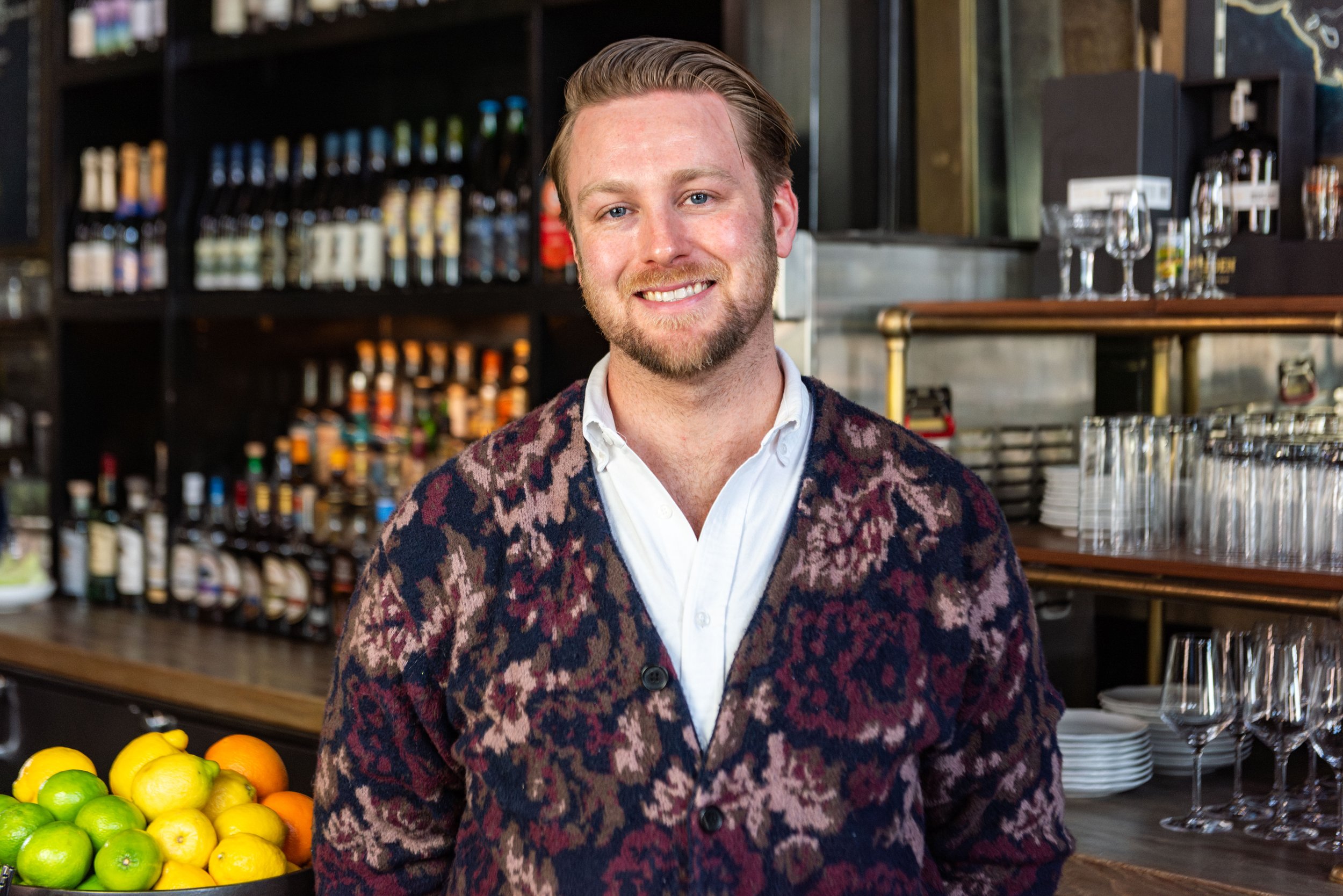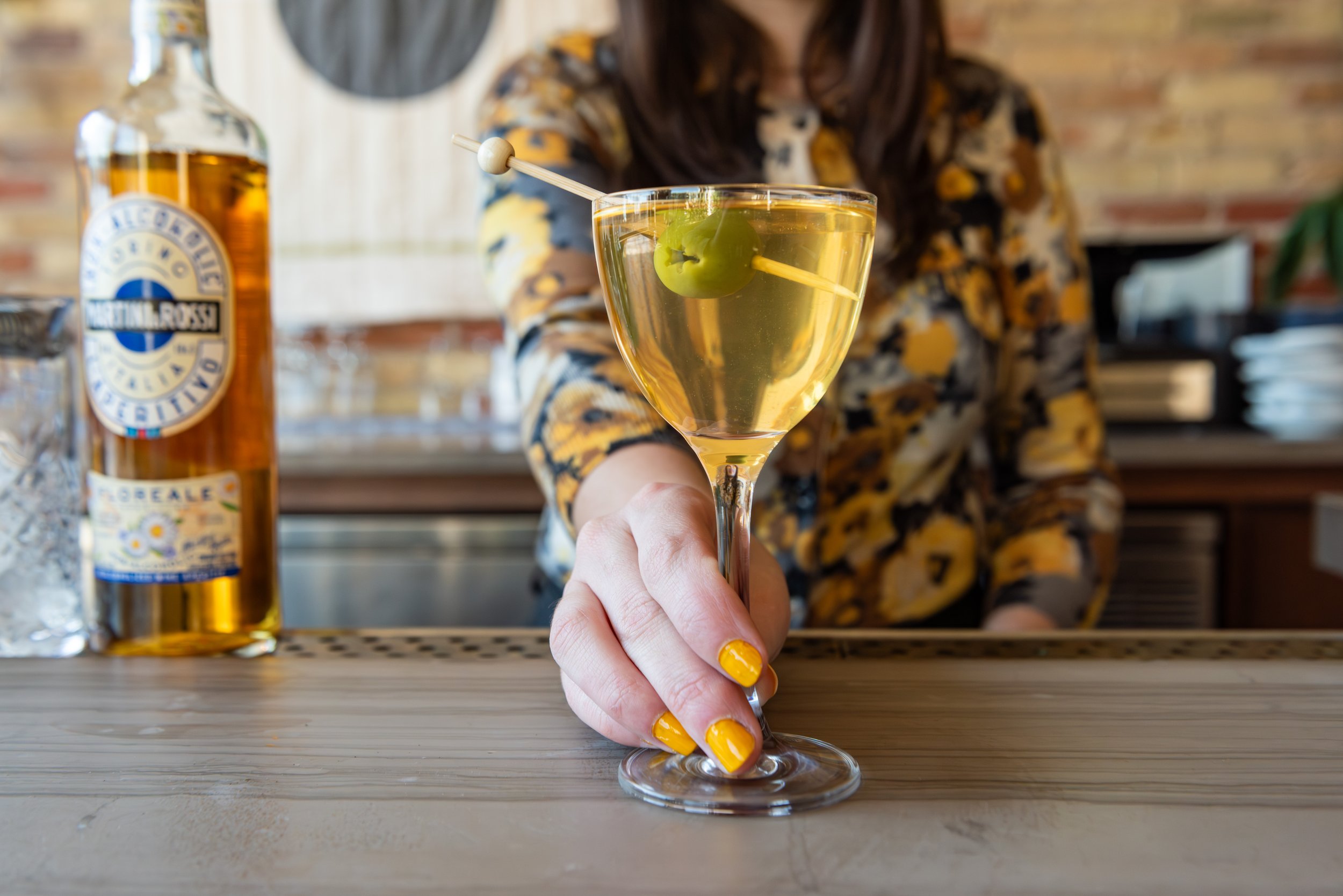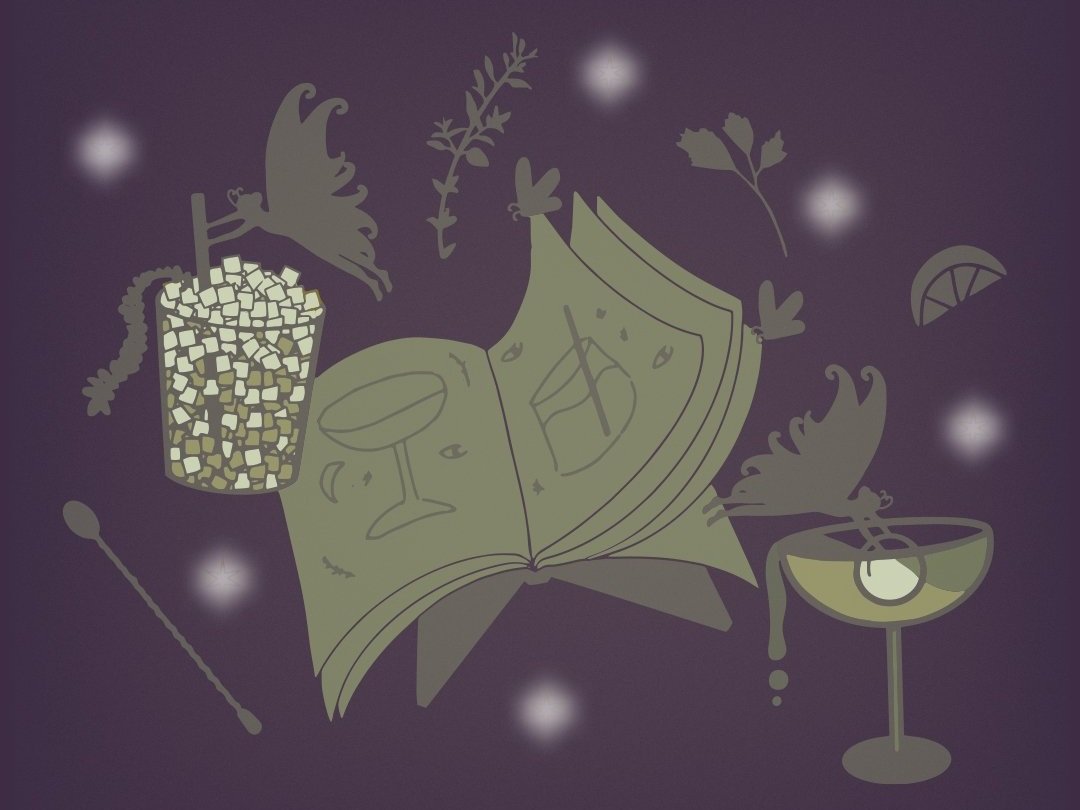House Fortified
Atlanta bartenders are going the extra mile to create ingredients from-scratch.
When there is an abundance of bar products readily available—from syrups to liqueurs and bitters in every flavor—why take the time to make your own? For Atlanta bartenders, the question is: why not? They are going above and beyond to customize ingredients and make the most out of fresh produce by way of more shelf-stable products like bitters and liqueurs. Concentrated infusions and fortified ingredients have a significantly longer shelf life than fresh juice or syrup, while still allowing flavors to shine through in their original form. Ingredients can also be stretched in a more sustainable way—carrying them beyond their peak seasons and making use of scraps—while also offering a personal touch that helps bars stand out.
Ticonderoga Club’s The Cutter with Four Roses Bourbon, House Bitters, House Amaro, Lemon
French 75: Barrel Aged Gin, Xila Licor de Agave, Lemongrass Syrup, Lemon, Prosecco, House Thai Bitters, Orange Bitters
Bars like Ticonderoga Club have made housemade bitters central to their entire approach to cocktails and service. They keep a minimal backbar and focus on specialty cocktails that aren’t overly fussy, so having a few tailor-made products maximizes their useability and impact. Owners Greg Best and Paul Calvert’s love of Amer Picon (and the struggle to source it in the U.S.) led to the creation of their house amaro, aptly named Amer Ticon. It has become a signature item over the years. “It laid a great foundation and taught me a lot of building blocks,” says Bartender Alec Bales. “It follows the ethos of less is more.“ The Amer Ticon blends vermouths and amari to mimic the citrusy French aperitif, and is used as a substitution in bitter-based classics. The bar also added Ticonpari to the repertoire, a red bitter that sits somewhere between Aperol and Campari and acts as a substitution for both. In Bales’ Cutter, a version of a Paper Plane, he simply replaces the Amaro Nonino and Aperol with equal parts of the house bitters, respectively, and the resulting cocktail is as equally balanced as its inspiration, while characteristically unique to Ticonderoga.
At Talat Market, the house Thai bitters allow Bar Manager Adrian Fessenden-Kroll to build cocktails with flavors that mirror those found in the menu of modern Thai dishes from Chefs Rod Lassiter and Parnass Savang. “The cocktails and food have to play well together. It helps to have a little focus.” Her bitters infuse an array of tropical fruits and spices into overproof rum—pineapple, toasted coconut, citrus zest, soursop leaf, lemongrass, allspice, and Makhwaen among them. The bitters lend flavor to cocktails like her French 75 with aged gin, Xila Licor de Agave, and lemongrass syrup, transforming the classic with more depth. “Being in Georgia, we get great produce, so it’s important to highlight that.”
Miller Union’s Heading South WITH Vodka, Spiced Apple Liqueur, Apple Brandy, Averna, Lemon
Gunshow’s PB+J Negroni: withPeanut-Washed Gin, Basil-Infused Campari, Muscadine Liqueur, Sweet Vermouth
LIttle Bear’s PSL Espresso Martini with Spiced Squash-Infused Vodka, Liqueur, Vecchio Amaro del Capo
Conversely, a host of bartenders are stretching seasonal produce by making their own liqueurs. At Miller Union, Bartender Evan Sewell’s Appletini riff, the Heading South, uses a combination of apple liqueur and apple cider to build bold, fresh apple flavor into the cocktail. Her liqueur leans on Everclear for high extraction, and is infused with fresh local apples, cinnamon, clove, and allspice. She lets the mixture meld for a month before straining and blending it with the apple cider and ginger syrup. Similarly, at Gunshow, transforming fresh ingredients is an essential part of the bar program. “We make everything from scratch. It's extremely important to us,” says Bartender Jeramie Eubanks. “We buy everything from local farmers, making sure we utilize everything we can.” During muscadine season, he transforms the fruit into a liqueur to extend its life and impart fruit flavor into cocktails like his PB & J Negroni with peanut oil-washed gin, Thai basil-infused Campari, sweet vermouth, and muscadine liqueur.
Bar Manager Charles Howk keeps the backbar at Little Bear stocked with unique bitters and liqueurs year round—peach bitters from last summer, pecan amaretto from the fall, and for the winter season, a coffee liqueur for a spiced espresso martini. “It comes from a desire to show off beautiful local produce in a more creative way, but also, different flavors are soluble in different things. A liqueur gives you alcohol extraction, plus sugar, plus water, for a more holistic picture of the flavor.” For his coffee liqueur, a sous vide infusion of Portrait Coffee beans into dark rum with cacao husks maintains the bright fruit flavor and bitter structure of the coffee. Combined with a cold brew concentrate and sugar, the bottle can sit at the ready for weeks. “It’s about a love and appreciation of the produce, and a desire to keep it around throughout the year.”











